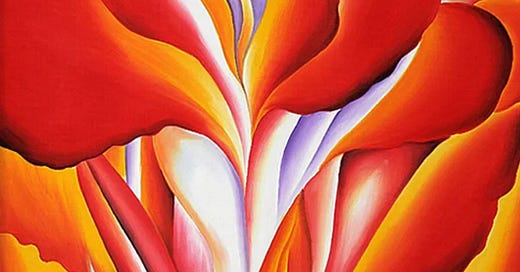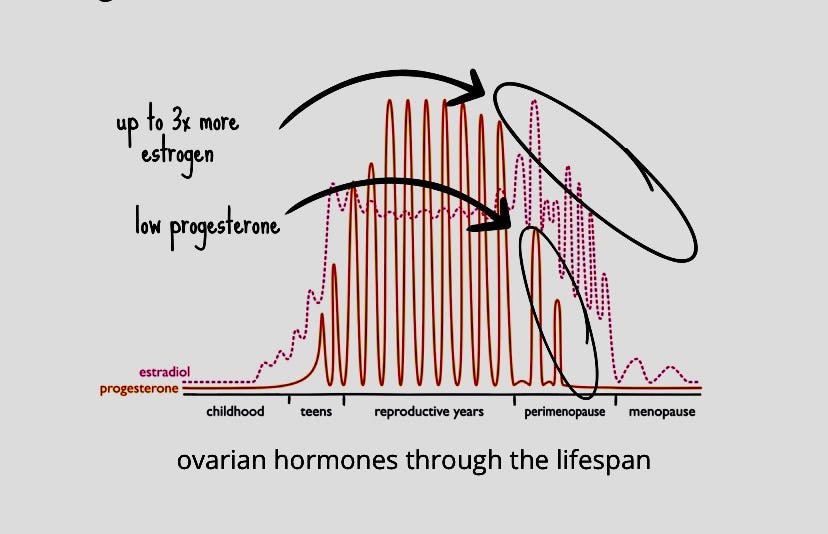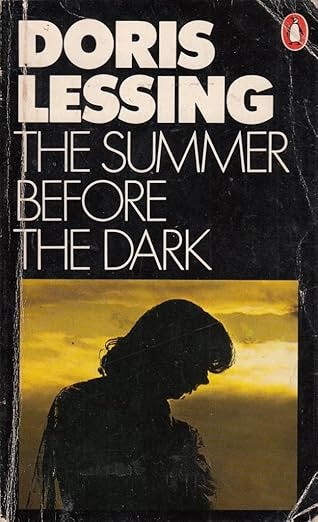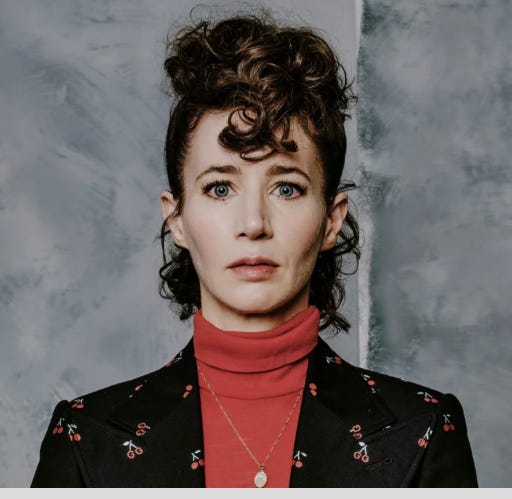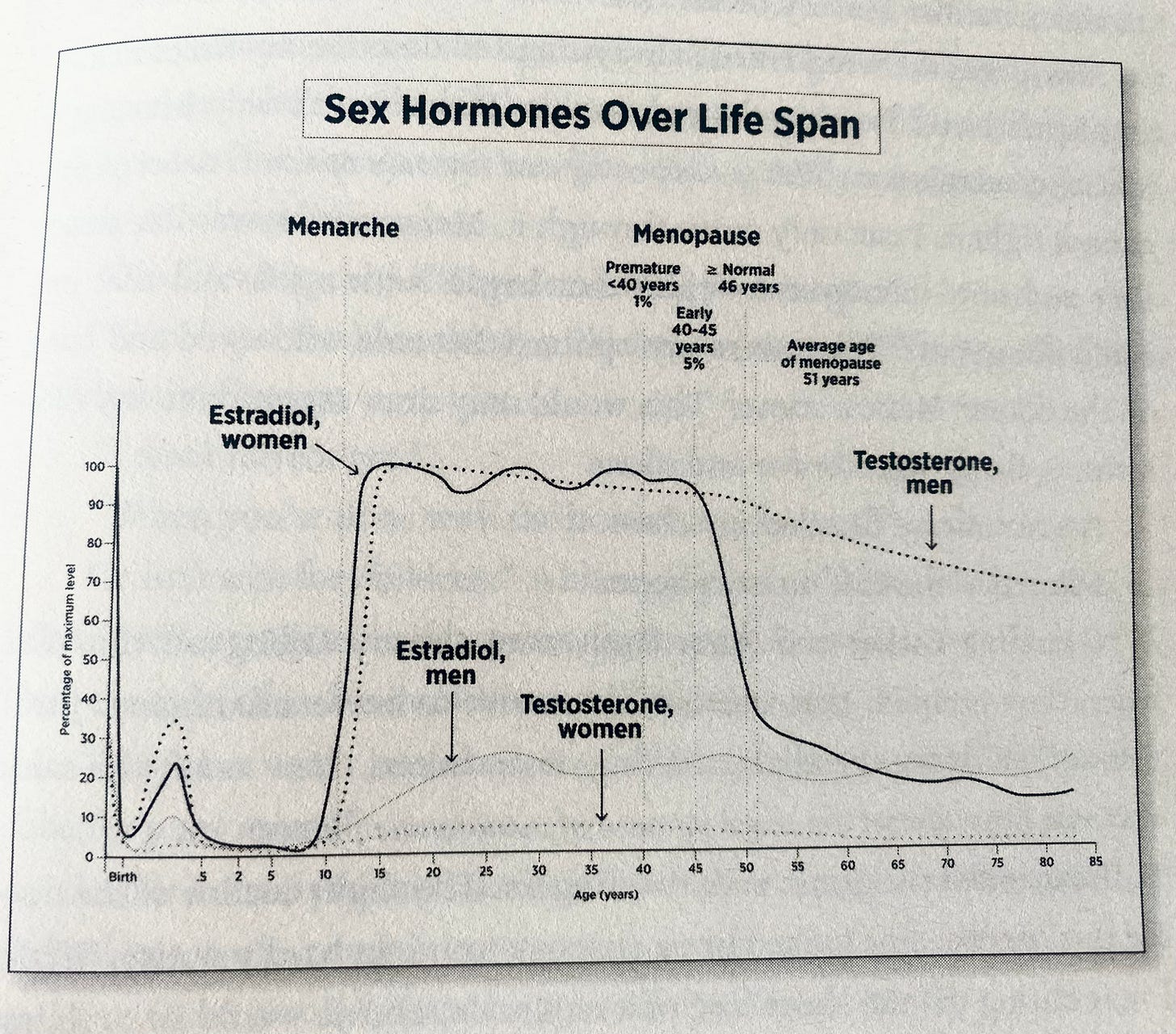My libido has turned into ‘a nuclear-powered juggernaut,’ wrote Hinemoana Baker about her perimenopausal sex surge. In this post I will analyse – scientifically, sexually and spiritually - the overwhelming hormonal urge which can affect many women in their forties and even early fifties, in perimenopause. It results in unexpected desires, met and unmet, and perhaps plays some part in affairs and the peak in divorce at the age of 45. We’re so used to the old-fashioned ‘misery=menopause’ narrative that many of the joys (of sex and more) of this time of change have gone unheralded. I’m here to change that. (Here’s Georgia O’Keeffe’s Red Canna painting for you, as illustration.)
Baker said: ‘I’m hornier for much more of my cycle than ever before.’ She made her confession on the women’s health app Clue, but there’s also a whole set of gripping threads on Mumsnet (Here's one) discussing the surprising surge of oomph, as well as its wear and tear on vibrator batteries and long-term relationships. The surge throws a sexy spanner into all the other stresses and strains of midlife, for men and women.
Of course, the dominant scientific and academic narrative gives the perimenopausal sex surge a nervous swerve, and concentrates dourly on the downside: lowered libido and mood in perimenopause, which affects many women in their mid to late forties. Not all of us are lucky enough to benefit from the sudden lollopalooza of desire. But I was, and I am thus interested in gathering what research we have in the form of personal and literary accounts for your erudition here.
And I can explain scientifically why the hormonal sex surge happens. In perimenopause - which I always describe as ‘menopause’s dastardly little sister’, because you still have your periods and you don’t know what’s happening - your estrogen can hit unprecedented highs. The pink lines on the graph show estrogen levels going into insane rollercoaster mode, leaping and plunging erratically.
In some women, the levels are much, much higher than their previous peaks at ovulation mid-month. In fact, rampant for a number of years. Your body think it’s your last shot at breeding. Meanwhile progesterone (in orange), the calming, anxiety-reducing, sleep-promoting hormone plunges down, leaving estrogen still on a high, before both hormones eventually leave the building as periods end in menopause. Those peaks of estrogen and your remaining testosterone (which is a female hormone too) are petrol for your libido.
As the Mumsnetter nicknamed BigPussyEnergy (no embarrassment there) wrote in 2024: ‘Trouble is middle-aged men just can’t keep up! My sex drive is higher now than when I was married, although it did increase at around 40, after divorce. Now 50, and my boyfriend only wants it twice a month. I’d have it every day, so we compromise on about once a week.’
Let’s take the conversation onto a higher plane too, and realise that this surge has been riding through literature for years, without the scientific and hormonal explanation. Doris Lessing wrote The Summer Before Dark back in 1973, in which a 45-year-old woman gets a new job and begins an affair with a younger man, and questions societal expectations and the roles she has played as a mother: ‘What's terrible is to pretend that second-rate is first-rate.’
Lessing’s heroine embarks on a sometimes-difficult journey of self-discovery. “All those years were now seeming like a betrayal of what she really was. While her body, her needs, her emotions–all of herself–had been turning like a sunflower after one man, all that time she had been holding in her hands something else, the something precious, offering it in vain to her husband, to her children, to everyone she knew–but it had never been taken, had not been noticed. But this thing she had offered, without knowing she was doing it, which had been ignored by herself and by everyone else, was what was real in her.”
The hormonal high can be a terrifying as it is liberating. Another Mumsnetter who’d had no sex for the last six years of her 12-year marriage and had moved into ‘friends’ zone’, suddenly experienced perimenopausal mood swings and ‘another terrifying symptom, the massive increase in my libido – almost uncontrollable… Has anyone else experienced anything like this and come through the other side? It sounds like a good problem, but I have nowhere to put these feelings and feel so desperate and scared that I’m going to do something life-destroying. Any help would be appreciated.’
I hope she got help, one way or another, but there were soon 103 entries on that thread, including, ‘Been with my husband for 32 years and apart from when we were younger, had very low libido. These last few weeks I’ve felt so horny it’s untrue…hubby definitely not complaining. We’ve gone from once in a blue moon to at least five times a week. It’s all I can think about!’
Other women found the thread ‘a revelation and a comfort’. ‘It’s real,’ said another writer. ‘The bad news is I have developed a massive crush on a (married) male friend who I lust after with a passion…I am worried that one of these days I will take him up on the risky suggestion he made to me a few months ago.’ The originator of the thread summed it up: ‘Somewhere on the internet a group of men are wondering where they can meet women like us.’ The sex surge often disappears around menopause – but much less so if you take estrogen, progesterone and testosterone HRT, which I’ll talk about another time. In fact, that can often result in maintaining lollopalooza for years.
The subject has recently surfaced in all its glory in a bestseller, and I can highly recommend American author and filmmaker (above)
’s book All Fours, which is basically one long, rather graphic perimenopausal sex surge coupled with a midlife crisis. The tampon scene was the talk of the town. Surpisingly, July felt the need to stick a graph in her book. which shows when estrogen (estradiol) in women falls off a cliff compared to testosterone in men, which motors on.But what we didn’t get from July was the detail (in the earlier graph at the top) of the wild final surges of estrogen in perimenopause before shutdown. It’s the ‘Rumspringa’ moment for hormones. July’s novel was nominated for the Women’s Prize for Fiction and the National Book Award – classy. As Miranda’s character says of her sudden wild desire, ‘Was this the secret to everything? This bodily freedom? It felt intuitive and healthy, as if promiscuity was my birthright as a woman.’
More in my book How to Have a Magnificent Midlife Crisis. Please pass on my Substack if you think someone else will enjoy it. This Substack is free, but if you want to support my independent research into midlife, menopause, and mental healthiness, you can subscribe (and get exclusive extras) for a mere £4 a month.
Coming next Friday: Why does my brain rewire in midlife?
*

